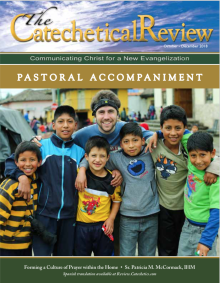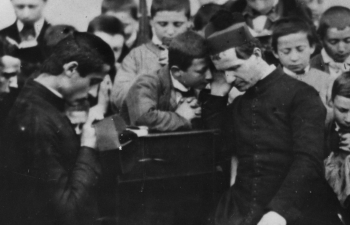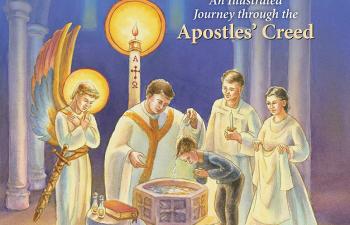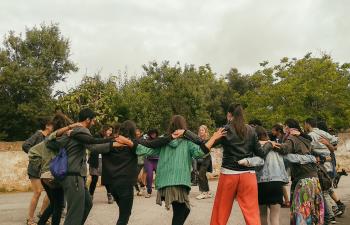What does it mean to learn the Catholic Faith? Certainly there are names and historical periods that are important. Essential revealed truths must be understood. This is so because it is God’s revelation that has been entrusted to the Church, a revelation that all the baptized have a right and a need to hear and understand over a lifetime. There is a story to grasp, that of salvation history and our particular place in it. But it is quite possible, of course, for these things to be learned “at a distance,” as a string of doctrines and precepts that are briefly considered but then quickly discarded. Because of the unique cultural challenges we face, if our catechesis doesn’t also speak to the heart, if it doesn’t move those we teach to desire a life of union with God and sacrificial love of others, and if it doesn’t help them live from their own personally-formed Catholic convictions, the faith of our students will lack what it most needs to survive. Today, catechesis is ineffective if it is merely conceptual. A conceptual catechesis depends upon the stability provided by a Catholic culture present in society and in the home; and such a milieu can no longer be presupposed in most instances. We must, therefore, teach in ways that stir up personal convictions to follow the way of Christ, even as we try to rebuild cultural supports. When the Fathers of Vatican II restored the ancient catechumenal process as the preferred way to form and initiate adult converts to Catholicism, they used these words to describe this “new” kind of formation: “The catechumenate is not a mere expounding of doctrines and precepts, but a training period in the whole Christian life, and an apprenticeship duty drawn out, during which disciples are joined to Christ their teacher.”[i] Much can be gleaned here for our own catechetical work. How could our catechesis better resemble a “training period in the Christian life”? How do we teach in such a way that our students not only know the Faith but deeply desire to join themselves to Christ, so that he becomes their teacher? In a 2015 book, Jim Beckman insightfully describes just such a process for youth ministry.[ii] Inspired by his helpful paradigm, what movements would catechesis need to include if our learners are at the same time to be apprenticed? Teach. First, of course, we teach. The content of the Faith originates not in ourselves, it emerges not from our own experience, but it is, in fact, revealed. St. Paul put it well when he wrote, “for I received from the Lord what I also handed on to you” (1 Cor 11:23). There is a content to Christianity that our students need to hear and respond to and this content animates every aspect of our teaching. Show. Because we are forming them so that they can live out of their communion with God, they have to actually see that intimacy with God embodied in real human beings. The theological concept of cooperation with grace, for instance, becomes something I want to do when I see its fruits realized in another person who can realistically and authentically describe for me the process. We “show,” therefore, when we can offer a personal account—a testimony—of what we teach. If we can’t speak from our own experience to help them in this way, perhaps there is another person in the room or in the parish (or from a family of one of our learners) who might be able to offer a compelling testimony. Of course, “showing” the faith lived is exactly the point of turning to the testimonies of the saints. Try. In order for a real change of life to be a possible outcome, opportunities for our students to begin to put into practice what we’ve taught and shown them are necessary. How can we help them try to pray as we’ve prepared them? Perhaps there’s a chance for them to attempt an answer to a challenging objection to the faith. If they’ve encountered the Lord in a compelling way, how can we help them put this powerful experience into words that can be shared? Without being challenged to take a step forward in some real-to-life way, our catechesis isn’t going to form new instincts and habits. And it is precisely these instincts and habits that are needed if a person is to flourish as a disciple today. Do. What we try, with accountability to see us through the experiences of failure, becomes a confident reality. In apprenticing the Christian life, we teach and show so that they can try and do. The catechist, then, helps others begin to walk so that they can very soon run. Dr. James Pauley is Professor of Theology and Catechetics at Franciscan University of Steubenville and author of the book Liturgical Catechesis in the 21st Century: A School of Discipleship (Liturgy Training Publications, 2017).
Notes
This article is from The Catechetical Review (Online Edition ISSN 2379-6324) and may be copied for catechetical purposes only. It may not be reprinted in another published work without the permission of The Catechetical Review by contacting [email protected]



















